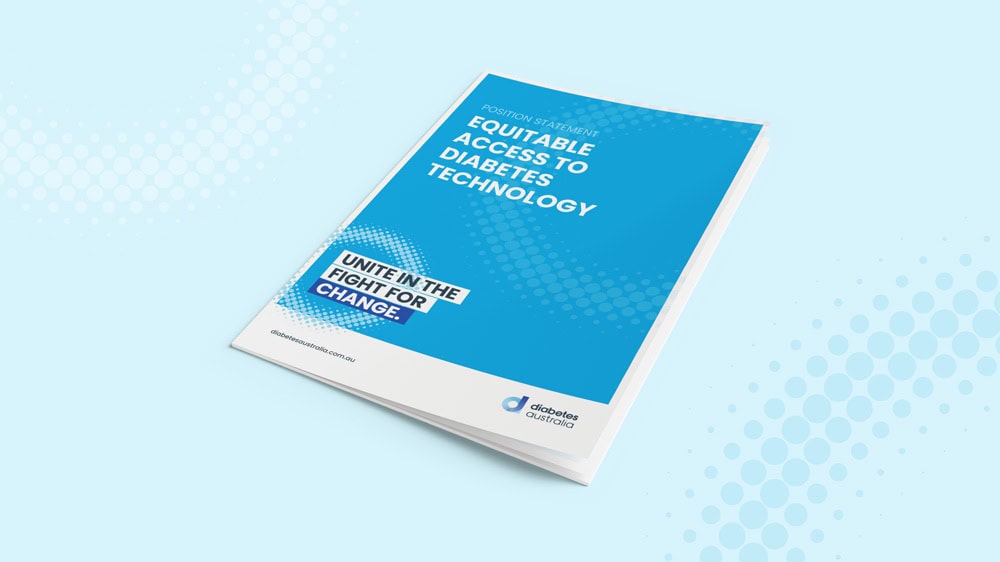Diabetes Australia is calling for more affordable access to life changing technology for people living with diabetes.
Launching National Diabetes Week (July 14-21) Group CEO Justine Cain said technology such as continuous glucose monitoring (CGM) devices and insulin pumps aren’t affordable for many people, despite their life changing impact.
Diabetes Australia is calling on the Federal Government to invest $200 million over four years in increased subsidies for these technologies.
“Over the past 100 years, advances in technology and medicines have delivered significant improvements in quality of life and health outcomes for people living with all types of diabetes,” Ms Cain said.
“In 2022, the Federal Government implemented subsidised access to CGM devices for all people living with type 1 diabetes. This was a significant win for the type 1 diabetes community and has improved the lives of tens of thousands of Australians. But there’s more to be done.
“While some Australians living with diabetes can access technologies such as continuous glucose monitoring devices and insulin pumps, they are just too expensive for many people.
“There are so many Australians struggling with the rising cost of living, that are missing out on life changing and potentially lifesaving diabetes technology.
“Investing in diabetes technologies is proven to improve health and economic outcomes. Research shows that these devices are game-changing in terms of managing blood glucose levels and improving time-in-range, which ultimately reduces diabetes complications and hospitalisations, and also improves quality of life.
“If we can reduce the number of people who develop diabetes related complications like stroke, heart attack, blindness and kidney disease – we could reduce the economic burden on our health system by billions of dollars each year,” she said.
A new policy paper, released by Diabetes Australia today, outlines the steps needed to create more affordable access to CGM devices and insulin pumps for people with all types of diabetes.
The paper includes economic modelling that shows a $200 million package of investment would support nearly 40,000 people living with diabetes to access these technologies, prioritising those with greatest need.
This initially includes insulin pumps for people living with type 1 diabetes who are:
- under 21 years of age;
- over 21 years of age with a health care card; or
- Aboriginal and Torres Strait Islander people.
The proposal also includes CGM devices for people living with type 2 and other types of diabetes who are:
- pregnant;
- Aboriginal and Torres Strait Islander people;
- under the age of 21; or
- requiring multiple daily injections of insulin.
“Access to these technologies is a significant issue for people living with diabetes,” Ms Cain said.
“As the leader in diabetes advocacy, Diabetes Australia is delivering this proposal to government and we will be working with them to see how our recommendations can be implemented.”
Ulla Leo’s daughter, Patisepa, 13, was diagnosed with type 1 diabetes when she was 9.
Her Mum said the diagnosis was very hard for Patisepa mentally.
“She could remember what it was like to be ‘normal’ and how easy her life was before diabetes,” Ulla said.
“She often didn’t eat because she hated the finger-prick tests and worried the needle would break in her tummy or wherever she was injecting.”
Despite great financial hardship, Ulla, a single working Mum with three children, joined the top tier of private medical insurance to get her daughter an insulin pump.
Patisepa’s glucose levels and her health, both physical and mental, improved dramatically when she combined CGM and the pump.
“Our life is so much easier with a pump. Although it’s very hard financially, it’s worth it because I don’t want Patisepa to just survive with diabetes. I want her to live her best life, and an insulin pump helps her do that.”
On July 3 a report was tabled in Parliament following the conclusion of a Parliamentary Inquiry into Diabetes, chaired by Dr Mike Freelander MP.
The report recommends the expansion of subsidised access to CGM devices and insulin pumps.
“Diabetes Australia welcomed those recommendations, and we are grateful that our voices are being heard in the halls of Parliament,” Ms Cain said.
“Diabetes Australia will be engaging with government about how we can deliver expanded subsidies in a staged, affordable way.”
Download the Equitable Access to Diabetes Technology position statement.

